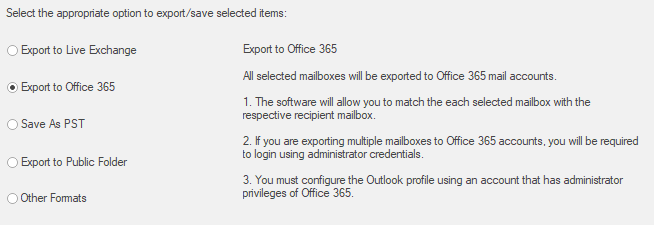In the rapidly evolving realm of Software as a Service (SaaS), staying ahead of the curve is not merely a goal—it’s a necessity for survival and growth. To drive real growth, we need to get one thing right: crafting a sales funnel that effortlessly whisks would-be customers through the doors and onto the path of loyal advocates. Curious about the secret to explosive SaaS growth? We’ve cracked the code, and it all starts with a finely tuned sales funnel. Follow these 10 carefully crafted steps to outmaneuver the competition and bulk up your market share.

Sales Funnel Optimization
The sales funnel metaphorically represents the journey of potential customers, from their initial awareness of your SaaS product to making the decision to subscribe or purchase. Encapsulated within this funnel are various stages, including awareness, interest, decision, and action, each presenting unique opportunities and challenges for SaaS companies. For SaaS companies, the sales funnel is a golden recipe for spinning curiosity into long-term devotion – the kind that spawns ardent brand ambassadors.
However, creating a sales funnel is only the beginning. The customer’s increasingly high standards force sales teams to constantly revamp their strategy, staying one step ahead of the digital curve. Each stage of your sales funnel is a hurdle. When you expertly fine-tune them, you’ll produce a well-oiled machine that speaks to customers on their level, priming them to become loyal fans who drive your business forward.
Understanding Your Target Audience
Identifying Ideal Customer Profiles and Buyer Personas: The foundation of an optimized sales funnel is a deep understanding of your target audience. Crafting detailed ideal customer profiles (ICPs) and buyer personas is pivotal. These profiles are not mere demographic summaries but rich, nuanced portrayals of the motivations, challenges, and behaviors of your potential customers.
How Audience Insights Can Guide Funnel Optimization: Armed with these insights, you can tailor each stage of your sales funnel to resonate with your target audience. Your funnel should work in harmony with your customers, empathizing with their struggles and speaking their language; when it does, the experience shifts from mere transaction to collaborative problem-solving.
Attracting Top-of-Funnel Leads
Content Marketing Strategies for Lead Generation: Content is the beacon that attracts potential leads to your sales funnel. Targeted content speaks directly to the needs and passions of your audience, catapulting your lead gen results. The secret to driving leads is creating engaging content that resonates with your audience – think informative blogs, comprehensive ebooks, insightful whitepapers, and interactive webinars that deliver real value.
Paid Advertising and Social Media Tactics: Complement your content marketing with strategic paid advertising and social media campaigns. Targeted ads on platforms like Google Ads and LinkedIn can help you reach a broader yet specific audience. Imagine having a direct line to people who need what you offer – social media makes that possible, allowing you to build relationships and drive interest in your product or service.
Capturing Leads with High-Converting Landing Pages
Elements of Effective Landing Page Design: Your landing page is often the first impression potential customers will have of your SaaS product. Whether you like it or not, people are judging – so, focus on crafting an impression that truly reflects your values and mission. A high-converting landing page is not just aesthetically pleasing but strategically designed to guide visitors towards taking action—be it signing up for a trial or downloading a resource.
Importance of A/B Testing to Improve Conversion Rates: A/B testing, or split testing, is indispensable in honing your landing pages. To seriously amp up your conversion rates, go beyond the same old layouts and try rejiggering the headlines, calls-to-action, and overall flow to discover what genuinely resonates with your people.
Leveraging Lead Magnets Effectively
Examples of Compelling Lead Magnets in the SaaS Space: Lead magnets are incentives offered to potential customers in exchange for their contact information. In the SaaS world, popular lead magnets include free trials, demos, and valuable resources like industry reports and toolkits. The key is to offer something so irresistible that prospects are willing to part with their precious contact details.
To win at sales funnels, you need to crack the code on correctly integrating lead magnets that resonate with your audience. The effectiveness of a lead magnet hinges on its integration within the sales funnel. Ensure that your lead magnets are prominently featured on your website and landing pages, and are aligned with the interests and needs of your target audience.
Nurturing Leads with Drip Email Campaigns
The Role of Automated Email Sequences in Lead Nurturing: Capturing leads is just the beginning. Turning casual interest into a loyal customer base relies on speaking directly to each person’s needs and concerns. Drip email campaigns, automated sequences of emails sent based on specific triggers or behaviors, are excellent for keeping your leads engaged and moving them down the funnel.
Tips for Personalizing Email Communication to Maintain Engagement: Personalization is key to effective email nurturing. Use the data you have on your leads to segment your email list and tailor your messaging. Personalized emails, addressing recipients by name and referencing their specific interests or pain points, can significantly increase engagement rates.

Utilizing Free Trials and Demonstrations
How Free Trials and Demos Can Accelerate the Conversion Process: Free trials and demonstrations serve as a tactile experience of your SaaS product. When customers can experience your product’s benefits firsthand, the results are staggering – sales tend to follow, and these tools make that possible. With free trials and demos, you can painlessly slide your product into a user’s workflow and address the particular headaches they’re facing.
Techniques for Converting Trial Users into Paying Customers: Conversion from trial to paid user hinges on the user experience during the trial period. First impressions count, and when it comes to your product, a well-structured onboarding process can be the difference between someone sticking around or heading for the exit – so put in the effort to get it right. Follow-up with trial users through targeted messaging that encourages them to make the most of their trial, address any queries promptly, and showcase the long-term benefits of becoming a paying customer.
Streamlining the Checkout Process
Simplifying the Payment Process to Reduce Cart Abandonment: A complicated payment process is a major deterrent for potential customers ready to make a purchase. You’ve worked hard to get customers to the checkout – now make sure they complete the deal by streamlining the process and banishing distractions that chase them away. Picture this: you’re about to buy something, and the process is a breeze. What does that look like? Fewer steps, super-clear instructions, and an extra layer of security to put your mind at ease.
Offering Multiple Payment Options to Accommodate User Preferences: Flexibility in payment can be the tipping point for users on the edge of conversion. Want to make it easy for customers to pay up? Offer them a choice of credit cards, PayPal, and other digital wallets. Rather than one fixed price, consider offering a sliding scale that reflects the level of support or features each customer wants – this way, everyone gets what they’re willing to pay for.
Encouraging Advocacy and Referrals
Establishing a Referral Program to Tap into Existing Customer Networks: A satisfied customer is the best marketing asset for a SaaS business. Make your best customers your brand’s biggest champions by launching a referral program that incentives their word-of-mouth endorsements – and reaps the rewards of their loyal devotion. Treat your customers like partners by offering them a share of the spoils for bringing in new blood. It’s a partnership that pays off – literally.
Using Customer Success Stories to Build Trust and Credibility: There’s no better endorsement than a successful customer sharing their positive experience with your product. Use real-life success stories, thumbs-ups from clients, and outstanding reviews to plant seeds of confidence in the minds of would-be customers. Featuring real stories in your marketing can significantly impact decision-making for prospects entering your sales funnel.
Analyzing and Refining Your Sales Funnel
Tools and Metrics for Measuring Sales Funnel Performance: To optimize your sales funnel continuously, you must measure its performance. Grab hold of hard data with Google Analytics, CRMs, and marketing automation platforms – you’ll get a concrete handle on how your marketing strategies are performing, including conversion rates, customer acquisition costs, and lifetime value. Insights into these metrics mean the difference between a leaky sales funnel and one that’s engineered for success. Pinpoint the problems, then optimize for unstoppable growth.
How to Use Data to Identify and Address Bottlenecks: Data analysis can help you identify where prospects drop off in the funnel and why. Recognizing these bottlenecks is the first step to addressing them. To seriously boost your funnel’s performance, you need to back your tweaks with cold, hard data. Whether you’re tweaking landing pages, fine-tuning email campaigns, or reassessing your pricing strategy, using data will point you in the right direction.
Enhancing Visibility with SaaS SEO Services
The Role of SEO in Driving Qualified Traffic to Your Funnel: Search Engine Optimization (SEO) is the art and science of ranking higher on search engine result pages. When potential customers scour the web for answers, SaaS businesses that prioritize SEO stand a much better chance of popping up as a top result, right when it matters most. SEO comprises various strategies, from keyword research and on-page optimization to link building and content creation—all aimed at driving qualified traffic to your sales funnel.
Benefits of Hiring a Specialized SEO Agency for Sustained Growth: While basic SEO can be handled in-house, a specialized SEO agency like Nine Peaks brings expertise and nuanced strategies tailored for the SaaS sector. Search visibility is about to get a whole lot easier – and more targeted – as your organic growth picks up steam.
Conclusion
In today’s competitive SaaS landscape, having a sales funnel is not enough. Growing your business requires a granular approach, where understanding your audience and crafting pages that speak directly to them is just the beginning. From there, you need to cultivate those leads and maximize your online presence through strategic search engine optimization. Imagine having a sales funnel that’s truly firing on all cylinders. By rebalancing and refining it, you’ll watch conversions soar and build a fiercely loyal following that’ll spread the word about your product.
As a call to action for SaaS businesses looking to thrive, take proactive steps to scrutinize and refine your sales funnel. Roll up your sleeves and dig in – applying these strategies will be an iterative process that refines itself with each new conversation. The path to exponential SaaS growth lies in a meticulously optimized sales funnel, and the time to start honing it is now.






















